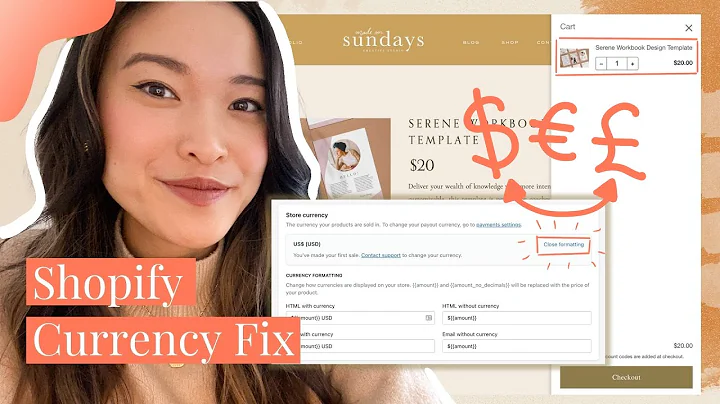Create Customizable Store Locator Page
Table of Contents:
- Introduction
- Adding the Store Locator Page
- Creating the Store Location Page
- Customizing the Page Template
- Setting up Store Locations
- Adding Store Name and Address
- Managing Working Hours and Contact Information
- Customizing Buttons and Style
- Adding Images and Google Maps API Key
- Adding Additional Sections to the Page
- Testing and Previewing the Page
- Conclusion
Introduction
In this article, we will explore how to create and customize a store locator page for your Shopify store. Having a store locator page can be beneficial for customers who want to find your physical store locations easily. We will guide you step by step on how to add the store locator page, customize its template, add store locations, and more. By the end of this article, you will be able to create a fully functional store locator page that fits your store's needs and enhances the customer experience.
Adding the Store Locator Page
To begin, we need to add the store locator page to our Shopify store. This can be done through the Shopify admin panel. We will navigate to the "Online Store" tab and click on "Pages". Within the "Pages" section, we can add a new page by clicking on the "Add page" button. Let's give the page a title, such as "Store Locator". We also have the option to add content to the page directly or use a theme template for customization.
Creating the Store Location Page
Once the store locator page is added, we can proceed to customize it further. To do this, we will access the theme customizer from the Shopify admin panel. In the theme customizer, we need to click on "Pages" and select the recently created "Store Locator" page. Here, we can make various customizations to the page layout, content, and style.
Customizing the Page Template
When customizing the store location page, we have the option to choose between the default page template or the store locator template. The default page template can only be modified using the Shopify admin panel, while the store locator template allows for customization within the theme customizer. We can choose the store locator template and save our changes.
Setting up Store Locations
Now that the store locator page is ready, we can proceed to add store locations. The store locator section allows us to input the store name, address, working hours, contact information, buttons, images, and even a Google Maps API key. By adding multiple locations or a single location, customers will be able to easily find your store(s) through the store locator page.
Adding Store Name and Address
Within the store locator section, we can input the store name and address. We have the option to reverse the content positioning, add headings, change the address heading, and format the address text. The store name and address will be visible to customers on the store locator page, providing them with essential information to locate your store(s).
Managing Working Hours and Contact Information
In addition to the store name and address, we can also manage the working hours and contact information within the store locator section. We can input the hours of operation and display them on the store locator page. Furthermore, we can add the store's phone number and customize the buttons and their respective links. This allows customers to contact your store directly or visit your store's contact page.
Customizing Buttons and Style
The store locator section provides options for customizing the buttons displayed on the page. We can rename the buttons, add links to external or internal pages, and choose between primary and secondary button styles. The primary style features a white background with black letters and borders, while the secondary style is the reverse. By customizing the buttons, you can provide a seamless user experience and encourage customers to take action.
Adding Images and Google Maps API Key
To enhance the visual appeal of the store locator page, we can add images. Images can be added to the store locator section, allowing you to showcase your store(s) or any other relevant visuals. Additionally, if you have registered your business on Google Maps, you can add a Google Maps API key to integrate a map into the store locator page. This further assists customers in finding your store location.
Adding Additional Sections to the Page
Apart from the store locator section, we can add other sections to the store locator page. Examples of additional sections include a newsletter section or an events calendar section. By clicking on the "Add section" option, you can choose from a variety of themed sections to complement the store locator functionality. This allows you to personalize the page and provide additional information or features to customers.
Testing and Previewing the Page
Once all the customizations are complete, it is essential to test and preview the store locator page. By switching to mobile view, you can verify how the page appears on different devices. Ensure that the layout, content, and functionality are optimized for a seamless user experience. Make any necessary adjustments to guarantee that customers can easily access and utilize the store locator page.
Conclusion
In conclusion, the store locator page is a valuable addition to your Shopify store, facilitating customer access to your physical store locations. By following the steps outlined in this article, you can create and customize a store locator page that meets your store's unique requirements. Providing accurate store information, clear directions, and engaging visuals will enhance the customer experience and increase the likelihood of in-store visits. Explore the various customization options available and make the store locator page an essential part of your online store presence.
Highlights:
- Create and customize a store locator page for your Shopify store.
- Add store locations with detailed information, working hours, and contact details.
- Customize buttons, style, and layout to match your store's branding.
- Enhance the page with images and integrate Google Maps for easy navigation.
- Add additional sections to complement the store locator functionality.
- Test and preview the page to ensure optimal user experience on all devices.
FAQs:
Q: Can I add multiple store locations to the store locator page?
A: Yes, you can add multiple store locations to the store locator page. Simply input the store name, address, contact information, and working hours for each location.
Q: Can I customize the style of the buttons on the store locator page?
A: Yes, you can customize the style of the buttons on the store locator page. You can choose between primary and secondary styles and add links to external or internal pages.
Q: Can I add images to the store locator page?
A: Yes, you can add images to the store locator page. This allows you to showcase your store(s) or include any relevant visuals to enhance the user experience.
Q: Can I integrate a map into the store locator page?
A: Yes, if you have registered your business on Google Maps, you can add a Google Maps API key to integrate a map into the store locator page. This helps customers easily locate your store(s).
Q: Can I add additional sections to the store locator page?
A: Yes, you can add additional sections to the store locator page. Examples include a newsletter section or an events calendar section. Customize the page to include any relevant information or features for your customers.






















